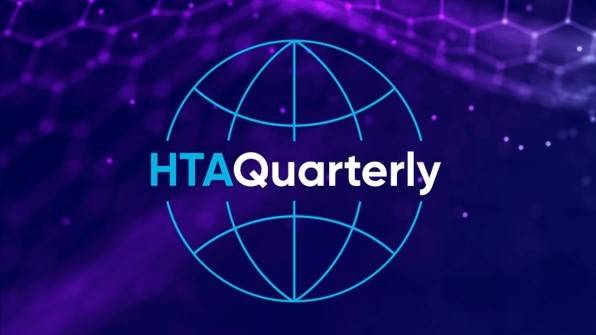Changing evidence requirements for France’s Early Access Program (EAP): What could we see in the coming year?

France’s Early Access Program: Facing challenges to sustain innovation and access

In this second part of our three-part series, we examine why the Haute Autorité de Santé (HAS) has embarked on a review of EAP’s methodological doctrine. We explore the drivers and implications of these changes, including stricter evidence requirements, the integration of real-world evidence (RWE), and the push for a more accountable framework to manage clinical and financial uncertainty.

Why is HAS tightening evidence requirements?
1. Failure to confirm efficacy post-EAP
- After drugs are approved in the FDA’s accelerated approval pathway, trials which confirm the drug’s clinical benefits are taking a median of 3.5 years to complete. Additionally, 25% of these trials take more than 5.8 years, which indicates significant delays in verifying the safety and efficacy of treatments.
- Drugs that ultimately yield negative results in post-approval confirmatory trials are still being mentioned or recommended in treatment guidelines that had incorporated them post-approval, raising concerns about patient safety and clinical decision-making.
Inspired by both internal reflections and international experiences, HAS seeks to create a clearer framework to ensure that therapies granted early access deliver on their initial promise. This is critical to protect patients and ensure public funds are not indefinitely allocated to treatments that ultimately fail to prove sufficient added value in clinical trials or in the real-world setting, especially in an era of mounting financial pressures.
2. Financial sustainability under strain
This financial strain is further underscored by the accelerating growth rate of hospital-distributed medicines, which include most EAP drugs. Between 2021 and 2023, hospital drug spending grew at an average rate of 13.5% annually, compared to 4.5% for the broader pharmaceutical market, adding nearly €800 million annually to public healthcare costs.
What to expect from the new doctrine
While the updated doctrine was initially expected in early 2025, delays suggest it will now be finalized later in the year. The revised framework will likely maintain HAS’s focus on ensuring robust, methodologically sound evidence at the time of assessment. This could result in reduced access for innovations relying on clinical development plans with single-arm studies, improper comparators, or unvalidated surrogate endpoints. However, HAS is expected to expand the role of indirect comparisons and real-world data to accommodate contexts where randomized controlled trials (RCTs) are unfeasible.
Structured development plans as a cornerstone
HAS is likely to place greater emphasis on the clinical development plan submitted during early access requests. This plan must outline a robust path to confirmatory data generation, with well-defined endpoints, comparators, and methodologies. HAS views this development plan as a core component of the “innovation presumption,” alongside unmet need and substantial patient benefit.
Defining acceptable evidence
Acknowledging the limitations of RCTs in certain contexts, HAS is exploring alternative evidence sources. These include:
- Indirect comparisons, such as network meta-analyses or matched adjusted indirect comparisons
- RWE from observational studies, provided they meet strict criteria for robustness and clinical relevance
Rules for these methodologies will also likely be published in 2025 as part of the HAS review. Key principles for external comparison methodologies are anticipated to align with HAS’s current standards, including the following. These principles aim to ensure that external comparisons are scientifically robust, minimizing uncertainties and supporting credible conclusions about treatment benefits and risks.
- Justification for the absence of randomization, with a clear rationale provided to support the chosen methodology.
- Proactive planning of indirect comparisons during clinical development, including a priori definitions of the clinical question, study population, intervention, comparator, and outcomes, all detailed in a comprehensive protocol and statistical analysis plan.
- Systematic reviews conducted to identify relevant prognostic variables, confounders, effect modifiers, and appropriate external data sources, ensuring robust evidence generation.
- Independent selection of comparators and external data sources, made without reference to the results of the uncontrolled trial. These must reflect the standard of care and align closely with the characteristics of the uncontrolled trial to mitigate biases, including selection, attrition, and measurement bias.
- Preference for methods using individual patient data, such as propensity scores, g-computation, or doubly robust estimation, to enhance the reliability of the analysis.
- Thorough exploration of underlying assumptions, including positivity, overlap, and balance, with residual confounding addressed through sensitivity analyses, such as the use of negative and positive controls, alternative external controls, or quantitative bias analysis. This ensures that any potential biases do not undermine the validity of conclusions regarding treatment effects.
- Comprehensive safety documentation, ensuring that safety outcomes are well-defined and comparable between the treatment and control groups.
Scrutiny of surrogate Endpoints

Evolution of the data collection process during EAP
In response, HAS has been working to streamline and simplify data collection, exploring the use of existing registries, such as BaMaRa for rare diseases, and leveraging the National Health Insurance Claims Database. The Haut Conseil pour l’Avenir de l’Assurance Maladie has reinforced the importance of systematic RWE collection to balance early market access for innovative therapies. Such data would validate clinical trial results over longer periods and across broader patient populations, potentially uncovering long-term effects or providing comparative insights across treatments. The Haut Conseil has also highlighted the need for a national registry to monitor real-world outcomes of therapeutic innovations, particularly in critical areas such as oncology.
By addressing these challenges, HAS aims to enhance the value of data collected during EAP, ensuring better supported decision-making while reducing the financial and administrative burdens on stakeholders.
Opportunities and challenges of the new doctrine
On the other hand, a clearer doctrine will bring greater predictability for industry, aligning EAP with international best practices. By expanding the use of real-world data and indirect comparisons, HAS may create new pathways for evaluation in complex contexts, while streamlined data collection processes could reduce costs and administrative burdens.
France’s EAP is at a crossroads, balancing its commitment to innovation with financial responsibility and the imperative to treat today’s patients while proving tomorrow’s outcomes. By refining its evidence framework, HAS aims to ensure that EAP continues to deliver on its promise.
Stay tuned for the final part of this series, where we will discuss the evolving data collection process, including the potential use of registries and health insurance databases to strengthen RWE collection.
This article summarises Cencora’s understanding of the topic based on publicly available information at the time of writing (see listed sources) and the authors’ expertise in this area. Any recommendations provided in the article may not be applicable to all situations and do not constitute legal advice; readers should not rely on the article in making decisions related to the topics discussed.
Connect with our team

Sources
- Charlotte Masia. Accés précoce. Conditions méthodologique requises pour la prise et levée d’un pari. Point d’étape du groupe de travail. Commission de la transparence en 2025. APICCS. 2025. Accessed 8 August 2025. Available at: https://www.apiccs.com/wp-content/uploads/API-Bulletin-Transparence-2025.pdf
- Deshmukh AD, Kesselheim AS, Rome BN. Timing of confirmatory trials for drugs granted accelerated approval based on surrogate measures from 2012 to 2021. JAMA Health Forum. 2023;4(3):e230217. doi:10.1001/jamahealthforum.2023.0217
- Gyawali B, Rome BN, Kesselheim AS. Regulatory and clinical consequences of negative confirmatory trials of accelerated approval cancer drugs: retrospective observational study. BMJ. 2021;374:n1959. doi:10.1136/bmj.n1959
- HAS. Bilan accès précoce 2021 à 2024. October 2024. Available at: https://www.has-sante.fr/jcms/p_3555537/fr/bilan-des-acces-precoces-aux-medicaments-288-decisions-en-trois-ans-infographie
- HAS. Définition des conditions méthodologiques requises pour la prise d’un pari lors d’une demande d’accès précoce pré-AMM ou post- AMM conditionnelle, et sa levée. 2024.
- HAS. Doctrine de la commission de la transparence (CT). Principes d’évaluation de la CT relatifs aux médicaments en vue de leur accès au remboursement. 2023. Available at: https://www.has-sante.fr/upload/docs/application/pdf/2021-03/doctrine_ct.pdf
- Haut Conseil pour l’Avenir de l’Assurance Maladie, Haut Conseil de la Famille, de l’Enfance et de l’âge, Haut Conseil du Financement de la protection Sociale. Pour un redressement durable de la sécurité sociale. Juin 2025. Available at: https://www.strategie-plan.gouv.fr/files/2025-07/Rapport%20Hauts%20Conseils%20-%20Redressement%20durable%20s%C3%A9cu%2020250701ter.pdf
- JORF. LOI n° 2023-1250 du 26 Décembre 2023 de financement de la sécurité sociale pour 2024. Article 76. 2023. Available at: https://www.legifrance.gouv.fr/jorf/article_jo/JORFARTI000048668773
- Sénat. Comptes rendus de la mission d’évaluation et de contrôle de la sécurité sociale. 20 mai 2025. Availalble at: https://www.senat.fr/compte-rendu-commissions/20250519/mecss.html#toc3
- Vanier A, Fernandez J, Kelley S, et al. Rapid access to innovative medicinal products while ensuring relevant health technology assessment. Position of the French National Authority for Health. BMJ Evidence-Based Medicine. 2024;29:1-5.
Cencora.com is providing automated translations to assist in reading the website in languages other than English. For these translations, reasonable efforts have been made to provide an accurate translation, however, no automated translation is perfect nor is it intended to replace human translators. These translations are provided as a service to users of Cencora.com and are provided "as is." No warranty of any kind, either expressed or implied, is made as to the accuracy, reliability, or correctness of any of these translations made from English into any other language. Some content (such as images, videos, Flash, etc.) may not be accurately translated due to the limitations of the translation software.
Any discrepancies or differences created in translating this content from English into another language are not binding and have no legal effect for compliance, enforcement, or any other purpose. If any errors are identified, please contact us. If any questions arise related to the accuracy of the information contained in these translations, please refer to the English version of the page.



